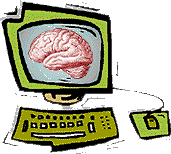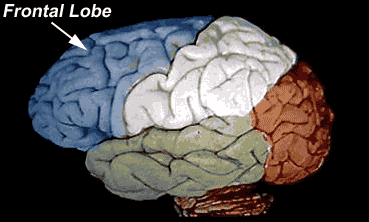Neuroscience For Kids
Tetris and the Brain
 October 8, 2009
October 8, 2009
The video game Tetris was developed in 1984 and quickly became one of the most popular computer games in history. The goal of Tetris is to fit falling shapes into a single line without any spaces. When a solid line is created, the line is removed and players score points. As the game goes on, the shapes fall faster and faster and if the shapes stack up to the top of the screen, the game is over.
 New research by a team of American and Canadian scientists shows that
players are changing their brains as they play Tetris. In these
experiments, 26 girls (ages 12-15 years old) were divided into two groups:
girls in one group played Tetris for three months (about 1.5 hours each
week) while the other group did not play Tetris. None of the girls had
experience playing Tetris before the experiment started.
New research by a team of American and Canadian scientists shows that
players are changing their brains as they play Tetris. In these
experiments, 26 girls (ages 12-15 years old) were divided into two groups:
girls in one group played Tetris for three months (about 1.5 hours each
week) while the other group did not play Tetris. None of the girls had
experience playing Tetris before the experiment started.
Structural and functional magnetic resonance imaging (MRI) was used to examine changes in the brain. The structural MRI allowed the researchers to compare the anatomy of the brain before and after the three month period; the functional MRI (fMRI) permitted the researchers to see which parts of the brain were being used when the girls played Tetris.
Compared to girls who did not play Tetris, girls who played Tetris for three months had significantly thicker cerebral cortex in area 6 (in the parietal lobe) and areas 22/38 (in the temporal lobe) on the left side of their brains. The fMRI data showed that girls in the Tetris-playing group had decreased activity in parts of the frontal and parietal lobes on the right side of the brain when they played the game. The brain areas that increased in thickness did NOT overlap with the areas that had decreases in activity.

So, playing Tetris appears to increase the thickness of the cerebral cortex and change brain activity. Does this mean that playing Tetris makes your smarter? Not necessarily! Scientists do not know how these brain changes are related to cognitive abilities such as memory, attention and learning.
| Did you know? | People who learn how to play Tetris tend to dream of the game as they fall asleep. (Reference: Stickgold, R., et al., Replaying the Game: Hypnagogic Images in Normals and Amnesics, Science, 290:350-353, 2000.) |
References and further information:
- Haier, R.J., Karama, S., Leyba, L. and Jung, R.E., MRI assessment of cortical thickness and functional activity changes in adolescent girls following three months of practice on a visual-spatial task, BMC Research Notes, 2:174, 2009, doi:10.1186/1756-0500/2/174.
Copyright © 1996-2009, Eric H. Chudler, University of Washington
